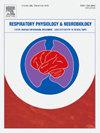GAA替代改善pompe小鼠的呼吸肌、神经和肺泡病理
IF 1.6
4区 医学
Q3 PHYSIOLOGY
引用次数: 0
摘要
庞贝病是一种由GAA基因突变引起的毁灭性神经肌肉疾病。这些突变导致α-葡萄糖苷酶(GAA)缺乏,导致溶酶体糖原在心脏、骨骼、平滑肌、运动神经元和肺泡上皮细胞中积累。神经肌肉无力引起的呼吸衰竭、反复吸入性肺炎和气管支气管软化是PD患者发病和死亡的主要原因。酶替代疗法(ERT)是目前FDA批准的唯一治疗Pompe病的方法,然而,使用自然发生和工程化腺相关病毒载体的基因治疗也被广泛研究作为一种替代治疗方法。在本研究中,我们直接比较了现有的和新的治疗方式- ERT, AAV9-GAA和AAVcc47-GAA的益处,重点是纠正与呼吸功能相关的病理。我们发现,成年早期小鼠的GAA替代改善了9个月大的呼吸。这种改善是由于舌、膈和肺中的糖原清除,从而改善膈神经肌肉连接,减少肺泡上皮内的溶酶体。本文章由计算机程序翻译,如有差异,请以英文原文为准。
GAA replacement improves respiratory muscle, neural, and alveolar pathology in the pompe mouse
Pompe disease is a devastating neuromuscular disorder caused by mutations in the gene GAA. These mutations result in a deficiency of the enzyme acid α-glucosidase (GAA), leading to lysosomal glycogen accumulation in cardiac, skeletal, and smooth muscle, motor neurons, and alveolar epithelial cells. Respiratory failure due to neuromuscular weakness, recurrent aspiration pneumonia, and tracheo-bronchomalacia are the leading causes of morbidity and mortality in PD patients. Enzyme replacement therapy (ERT) is currently the only FDA approved treatment for Pompe disease, however, gene therapy with naturally occurring and engineered adeno-associated viral vectors are also widely studied as an alternative treatment. In the present study we directly compared the benefits of existing and novel treatment modalities - ERT, AAV9-GAA, and AAVcc47-GAA, with an emphasis on correction of pathologies related to respiratory function. We find that GAA replacement in early adult mice improves respiration through 9 months of age. This improvement is attributed to glycogen clearance in the tongue, diaphragm, and lungs, which subsequently improved diaphragm neuromuscular junctions and reduced lysosomes within the alveolar epithelia.
求助全文
通过发布文献求助,成功后即可免费获取论文全文。
去求助
来源期刊
CiteScore
4.80
自引率
8.70%
发文量
104
审稿时长
54 days
期刊介绍:
Respiratory Physiology & Neurobiology (RESPNB) publishes original articles and invited reviews concerning physiology and pathophysiology of respiration in its broadest sense.
Although a special focus is on topics in neurobiology, high quality papers in respiratory molecular and cellular biology are also welcome, as are high-quality papers in traditional areas, such as:
-Mechanics of breathing-
Gas exchange and acid-base balance-
Respiration at rest and exercise-
Respiration in unusual conditions, like high or low pressure or changes of temperature, low ambient oxygen-
Embryonic and adult respiration-
Comparative respiratory physiology.
Papers on clinical aspects, original methods, as well as theoretical papers are also considered as long as they foster the understanding of respiratory physiology and pathophysiology.

 求助内容:
求助内容: 应助结果提醒方式:
应助结果提醒方式:


